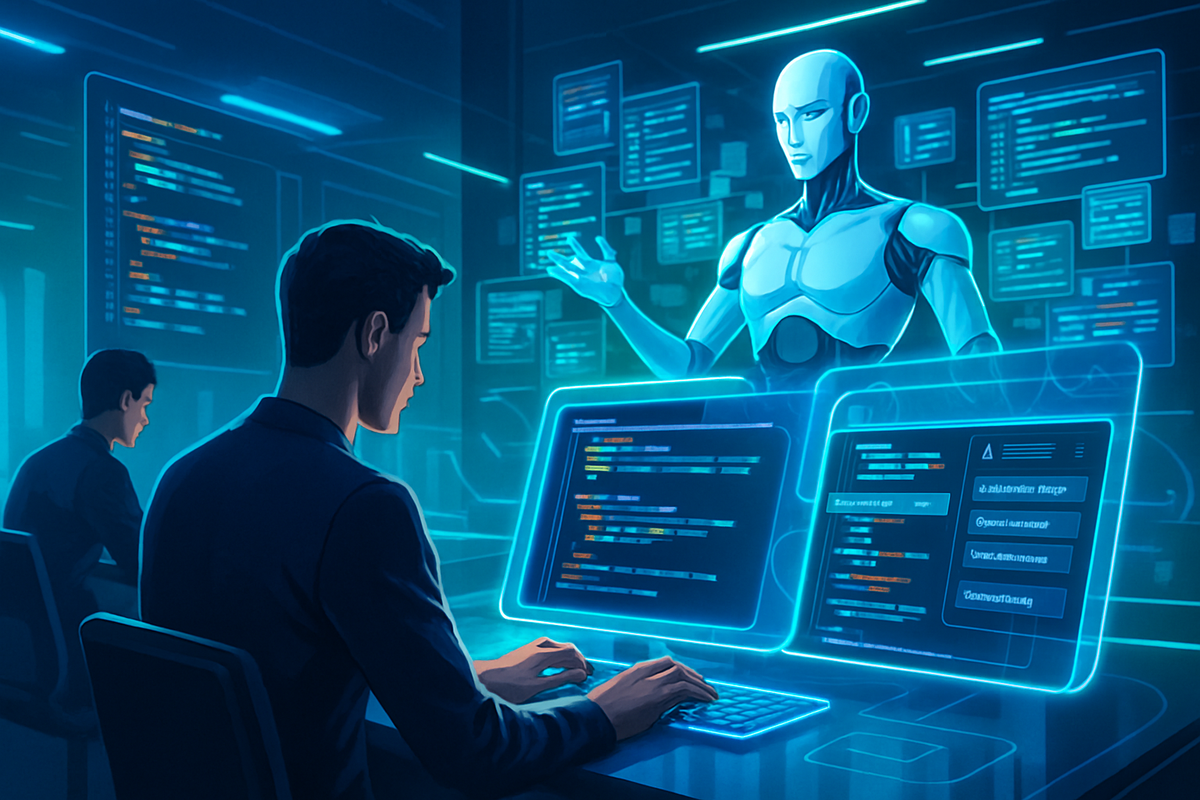The Three Generations of AI Coding Tools, and What to Expect Through the Rest of 2025
Explore the three generations of AI coding tools, from code completion to autonomous agents, and discover how digital nomads can amplify creativity and productivity in the evolving landscape of 2025.

From Code Suggestions to Autonomous Agents: The AI Coding Odyssey
Let’s be real: If you’re a digital nomad or a code-slinging wanderer, your laptop isn’t just your office – it’s your passport to possibility. But as the coffee shops evolve, so do the tools you use to build the digital world. Today, we’re diving headlong into the three generations of AI coding tools, and what the future (read: the rest of 2025) might look like for those of us who write, run, and refactor code wherever there’s Wi-Fi and a view.
“The best developers aren’t replaced by AI—they’re amplified by it.”
Generation One: The Code Completion Wizards
Picture 2020. You’re hammering out JavaScript, and suddenly your editor’s autocomplete feels smarter. Tools like GitHub Copilot and TabNine start finishing your sentences—literally. These early AI helpers didn’t just suggest variable names; they predicted entire code blocks. Welcome to Generation One—the era of AI-powered code completion:
- Predictive typing: AI guesses your next line, making you feel like a telepathic coder.
- Syntax fixes: Minor bugs and typos? Vanished before you blink.
- Usage: Integrated into VS Code, JetBrains, and every editor with dreams.
Impact: Productivity soared, but the AI was still your sidekick—not the superhero.
Generation Two: Co-Pilots Become Collaborators
Fast-forward to 2023. Suddenly, AI isn’t just guessing what you’ll type—it’s understanding what you’re building. Replit Ghostwriter, Amazon CodeWhisperer, and next-gen Copilot don’t just autocomplete; they explain code, generate unit tests, detect vulnerabilities, and even refactor spaghetti into angel hair.
- Context awareness: AI reads your repo, learns your style, and adapts suggestions.
- Multi-language support: Polyglot developers rejoice—one AI to rule them all.
- Basic bug-hunting: Not quite Sherlock, but at least a very caffeinated Watson.
Impact: Collaboration between human and machine leveled up. The best devs leaned in, letting AI handle the boring bits while they focused on creative problem-solving and, of course, where to find the best flat white in Bali.
Generation Three: Agentic Autonomy Arrives (2024–2025… and Beyond?)
And now? Buckle up, because we’re entering the age of Agentic AI. These aren’t just helpers—they’re autonomous development agents with the power to architect, code, test, and deploy entire features (sometimes even whole apps) with minimal human input. Think Auto-GPT, DevGPT, and the next wave of platform-integrated agents from AWS, Google Cloud, and Microsoft Azure.
- End-to-end workflows: Describe an idea, and the AI drafts specs, builds code, tests, and even provisions cloud resources.
- Continuous learning: These agents get better the more you use them, adapting to your project’s quirks.
- Integrated deployment: One click, and your new feature is live on the cloud. (Bonus: it probably has fewer bugs than your last rushed push!)
“The future isn’t about man vs. machine—it’s about teams where AI is your most tireless teammate.”
What Does This Mean for Digital Nomad Developers?
Freedom is the name of the game. With AI taking on the repetitive and the routine, you have more time to:
- Ship side projects while sipping coconut water.
- Contribute to open-source from a mountain hostel.
- Upskill in machine learning, blockchain, or whatever makes your heart race.
- Or, let’s be honest, just nap in a hammock guilt-free while your agent polishes your codebase.
But here’s the kicker: AI is only as good as the developer guiding it. The best nomads will harness these tools to amplify their unique strengths—creativity, communication, and adaptability.
Looking Ahead: 2025 and the Art of Code Without Borders
By the end of 2025, expect to see seamless integration across cloud platforms (AWS, Azure, GCP), with AI agents acting as cross-platform architects, polyglot coders, and even DevOps engineers. The line between developer and AI will blur—but the best results will still come from those who know how to ask the right questions… and maybe bribe their AI agent with a fresh API key now and then.
“Your passport might have stamps, but soon your codebase will too—thanks to borderless, AI-powered workflows.”
Want More Smart Takes on the Future of Work?
If you love staying ahead of the tech curve—and want the inside scoop on tools, trends, and nomad perks before the rest of the pack—why not subscribe for free as a Funaix Insider? Get exclusive tips, emerging tool reviews, and community invites delivered right to your inbox. Adventure—and innovation—await!
Curious about the tools or cloud platforms mentioned? Many have affiliate programs that help support digital nomads and indie devs. Explore, experiment, and share your journey—because the future of software is as boundless as your next destination.




